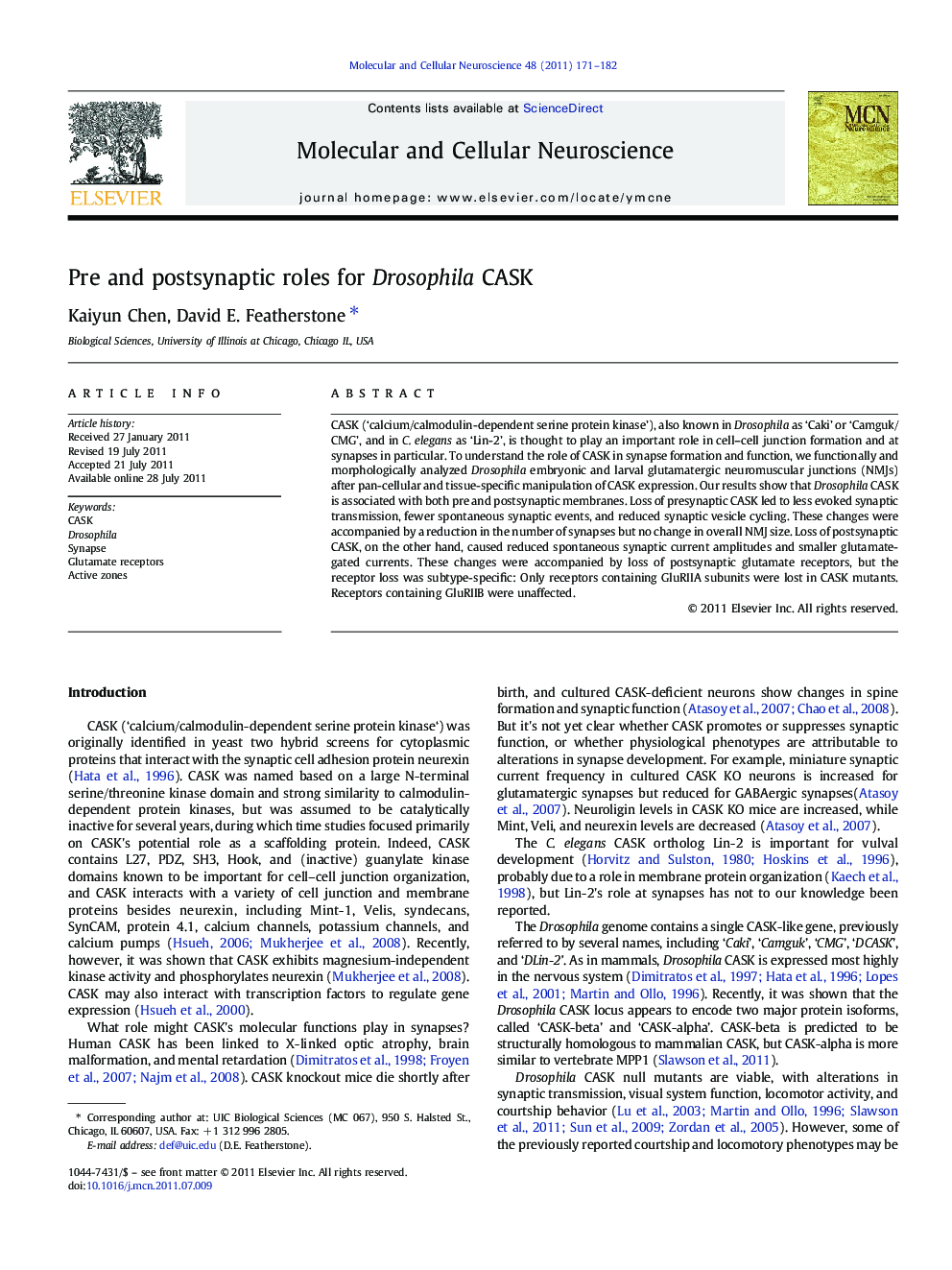| Article ID | Journal | Published Year | Pages | File Type |
|---|---|---|---|---|
| 10956525 | Molecular and Cellular Neuroscience | 2011 | 12 Pages |
Abstract
CASK ('calcium/calmodulin-dependent serine protein kinase'), also known in Drosophila as 'Caki' or 'Camguk/CMG', and in C. elegans as 'Lin-2', is thought to play an important role in cell-cell junction formation and at synapses in particular. To understand the role of CASK in synapse formation and function, we functionally and morphologically analyzed Drosophila embryonic and larval glutamatergic neuromuscular junctions (NMJs) after pan-cellular and tissue-specific manipulation of CASK expression. Our results show that Drosophila CASK is associated with both pre and postsynaptic membranes. Loss of presynaptic CASK led to less evoked synaptic transmission, fewer spontaneous synaptic events, and reduced synaptic vesicle cycling. These changes were accompanied by a reduction in the number of synapses but no change in overall NMJ size. Loss of postsynaptic CASK, on the other hand, caused reduced spontaneous synaptic current amplitudes and smaller glutamate-gated currents. These changes were accompanied by loss of postsynaptic glutamate receptors, but the receptor loss was subtype-specific: Only receptors containing GluRIIA subunits were lost in CASK mutants. Receptors containing GluRIIB were unaffected.
Related Topics
Life Sciences
Biochemistry, Genetics and Molecular Biology
Cell Biology
Authors
Kaiyun Chen, David E. Featherstone,
